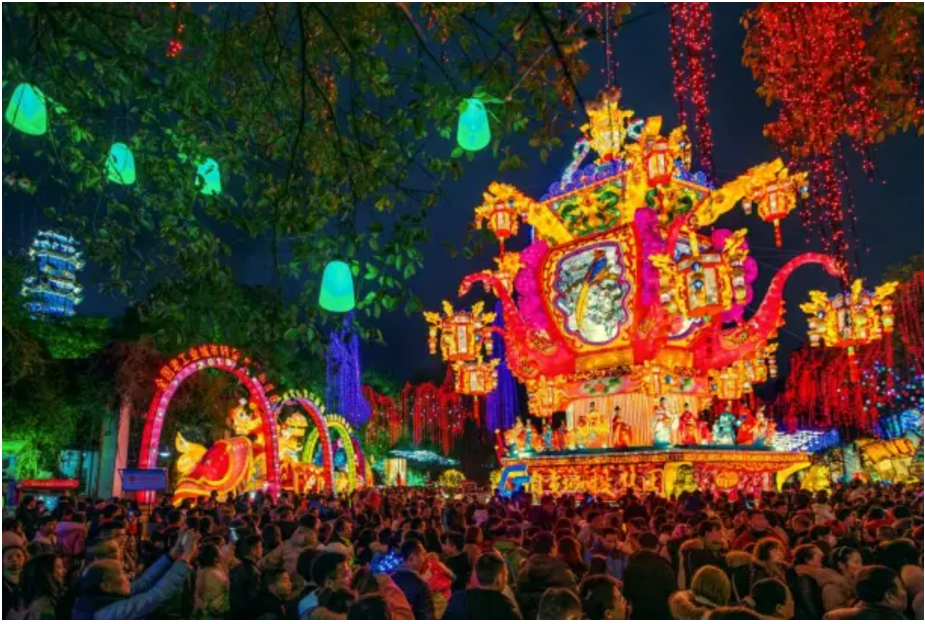UNESCO Intangible Heritage: 63 New Inscriptions
The UNESCO Intergovernmental Committee for the Safeguarding of the Intangible Cultural Heritage, meeting in Asunción (Paraguay) from 2 to 6 December, inscribed 63 new elements on the Lists of Intangible Cultural Heritage, at the initiative of 90 countries.

At the end of the debates, the 24 Member States of the Committee decided to inscribe 63 new cultural elements, including:
- ● 2 elements on the List of Intangible Cultural Heritage in Need of Urgent Safeguarding;
- ● 58 elements on the Representative List of the Intangible Cultural Heritage of Humanity;
- ● 3 programmes on the Register of Good Safeguarding Practices of Intangible Cultural Heritage.
With these new inscriptions, 788 cultural practices in 150 countries are now part of UNESCO's living heritage.
In response to the positive impact of the safeguarding measures put in place since their inscription, 3 elements have also been transferred from the List of Intangible Cultural Heritage in Need of Urgent Safeguarding to the Representative List of the Intangible Cultural Heritage of Humanity.
This Convention has reinvented the very notion of heritage, to the extent that tangible and intangible heritage, places and practices, are now inseparable. With these 63 new practices and traditions, our Convention continues to achieve wonders, not only by linking our generation to all those that have gone before, but also by constantly strengthening the links between the 183 States Parties to the Convention.
—— Audrey Azoulay,
UNESCO Director-General
Spring festival, social practices of the Chinese people in celebration of traditional new year
In China, the spring festival marks the beginning of the new year. It falls on the first day of the Chinese calendar and involves a variety of social practices to usher in the new year, pray for good fortune, celebrate family reunions and promote community harmony. This process of celebration is known as ‘guonian’ (crossing the year). In addition to participating in the public festivities, people make offerings and extend greetings to elders, relatives, friends and neighbours.

Custom of Korean costume: traditional knowledge, skills and social practices in the Democratic People's Republic of Korea
The Korean costume is an outfit comprised of a jacket and a skirt or trousers. It is completed with seasonal overclothes, including an overcoat and a waistcoat, and may include other accessories such as a breast ribbon. The costume is created using natural fabrics such as silk, ramie and cotton. Often referenced in art and literature, it is used on many occasions, including festivals and holidays. The Korean costume brings people together, instilling a sense of cultural belonging, identity and continuity.

Traditional knowledge and skills of sake-making with koji mold in Japan
Sake is an alcoholic beverage made from grains and water that is deeply rooted in Japanese culture. Craftspeople use koji mold to convert the starch in the ingredients into sugar. They oversee the process to make sure the mould grows in optimal conditions, adjusting the temperature and humidity as needed. Their work determines the quality of the sake. Viewed as a sacred gift from deities, sake is indispensable in festivals, weddings, rites of passage and other socio-cultural occasions.

Mongol nomad migration and its associated practices
Mongolian nomadic culture is rooted in the interdependence between pastures, livestock and herders. Herder families move between pastures to give the earth time to rejuvenate. The head of the household selects the date to relocate, and the family works together to prepare for the migration, such as by cleaning the area and preparing the animals. The wife then dresses in her finest clothes and leads the way during the migration to show her gratitude and respect for Mother Nature.

Knowledge, beliefs and practices related to jang making in the Republic of Korea
Jang are fermented sauces – such as soybean paste, soy sauce and red chili paste – that form the basis of the Korean diet. Jang sauces can be paired with vegetables, fish and meat. They can also be used to preserve food. The recipes vary from one household to the next and are believed to embody each family’s history and traditions. For instance, some families store aged soy sauce for decades to keep the taste of the food constant over time.


- Workshop on Documentation and Inventorying of Intangible Cultural Heritage for Sri Lanka held in Kandy, Sri Lanka
- Capacity Building Workshop on Teaching and Learning with East Asian Shared Heritage
- The Training of Trainers Workshop on the 2003 Convention for China (Second session) (Guangdong, Hong Kong, Macau)
Address: 81, Laiguangying West Road, Chaoyang District, Beijing, China
Zip Code: 100021
Tel: 86-10-64966526
Fax: 86-10-64969281
E-mail: crihap@crihap.cn
Leave us your e-mail address, we'll let you know about current events.



